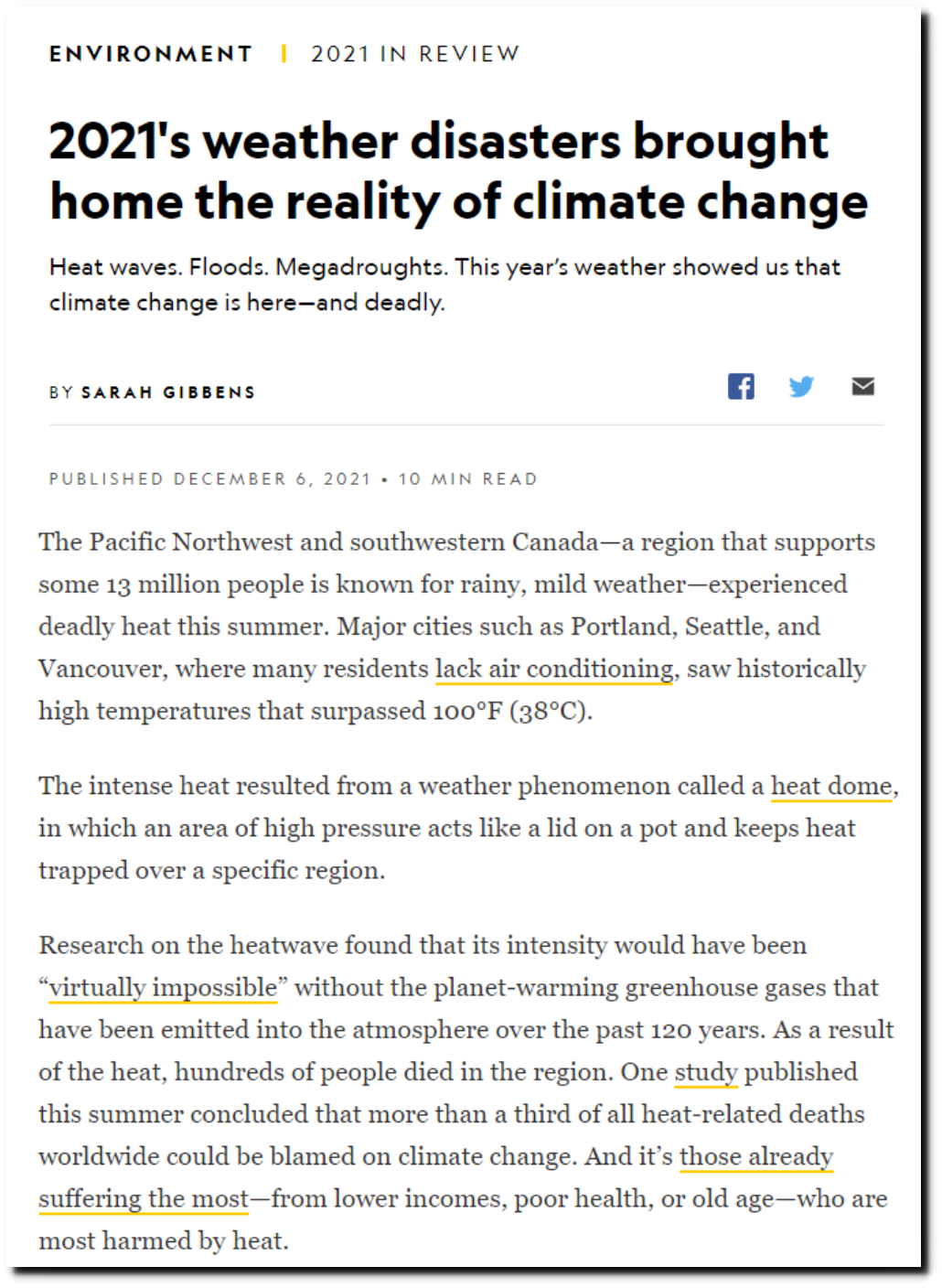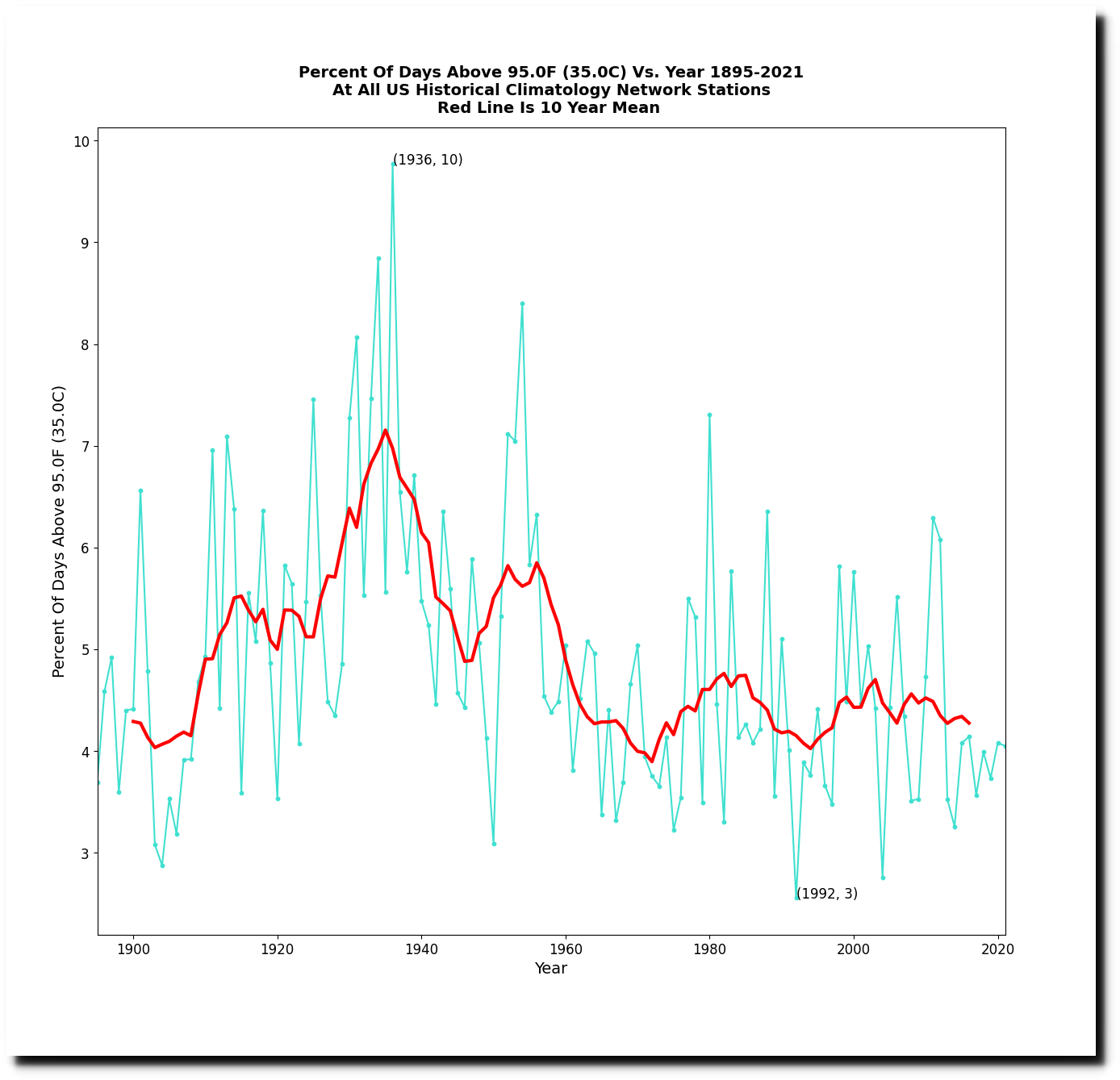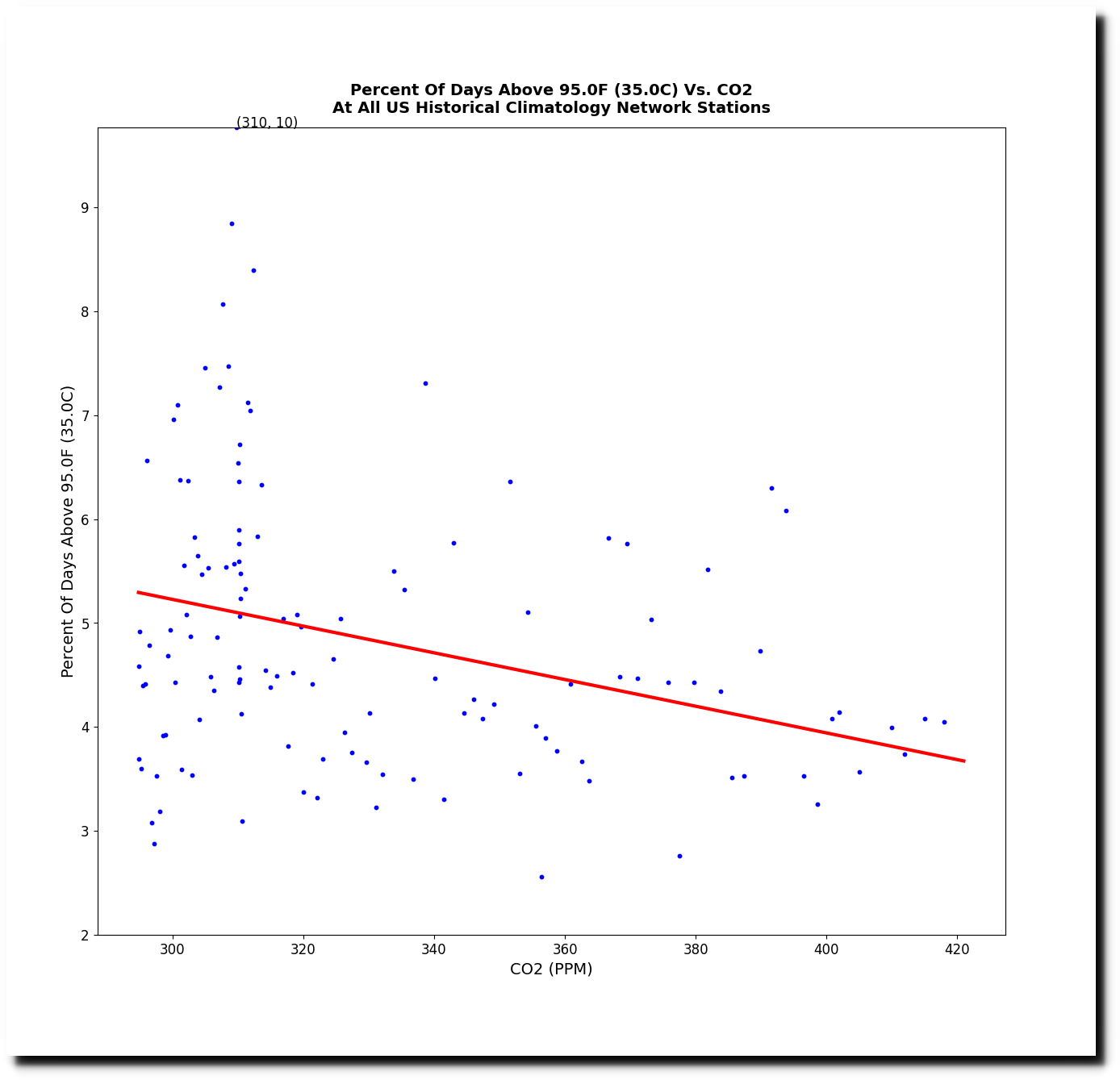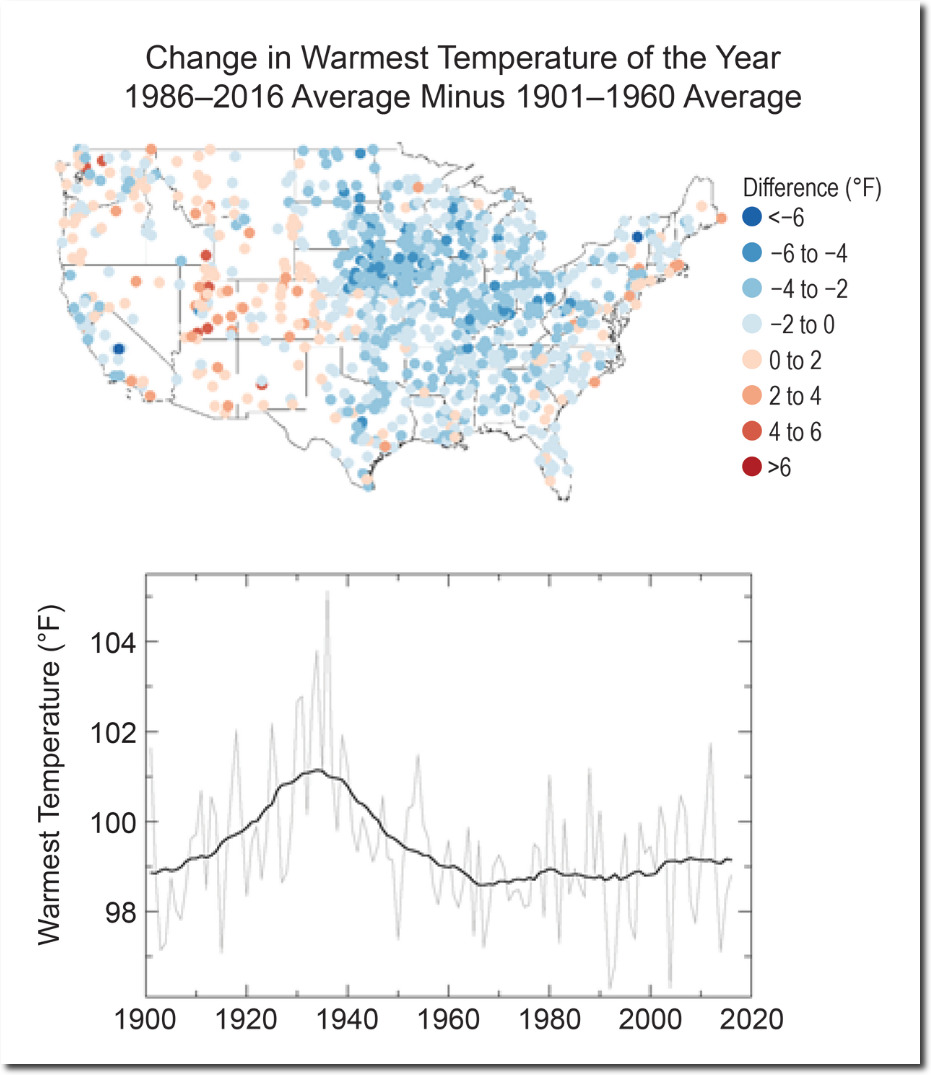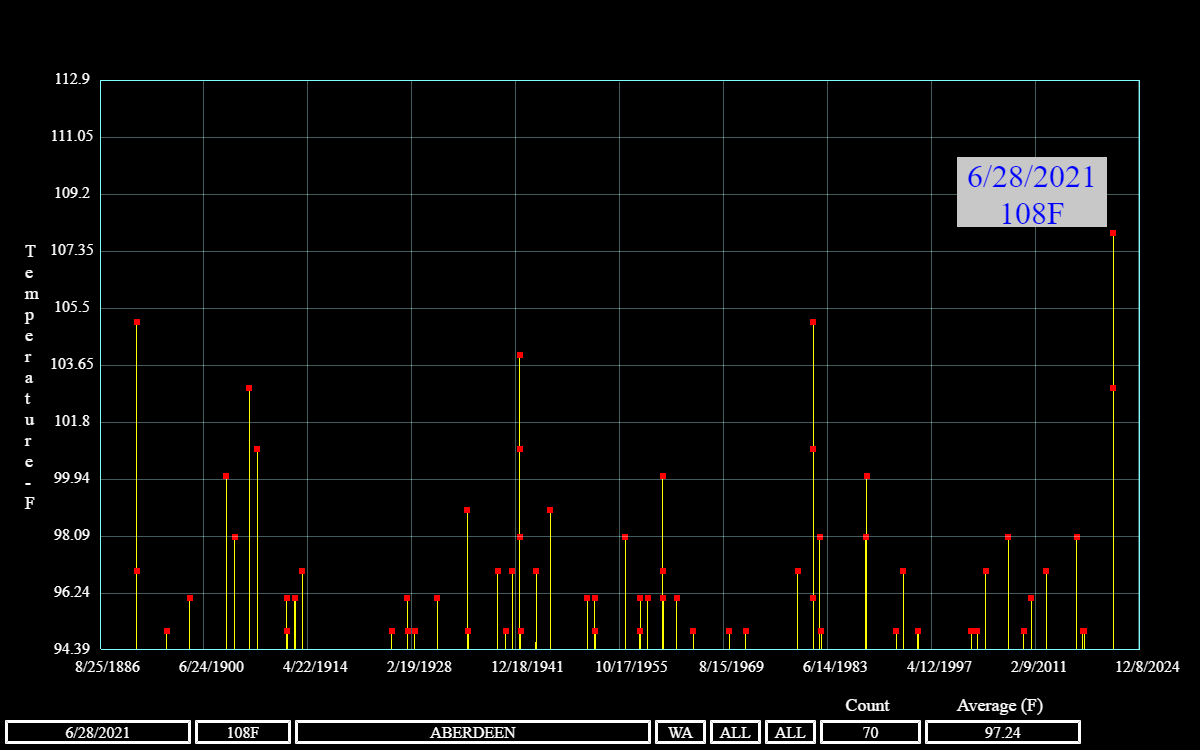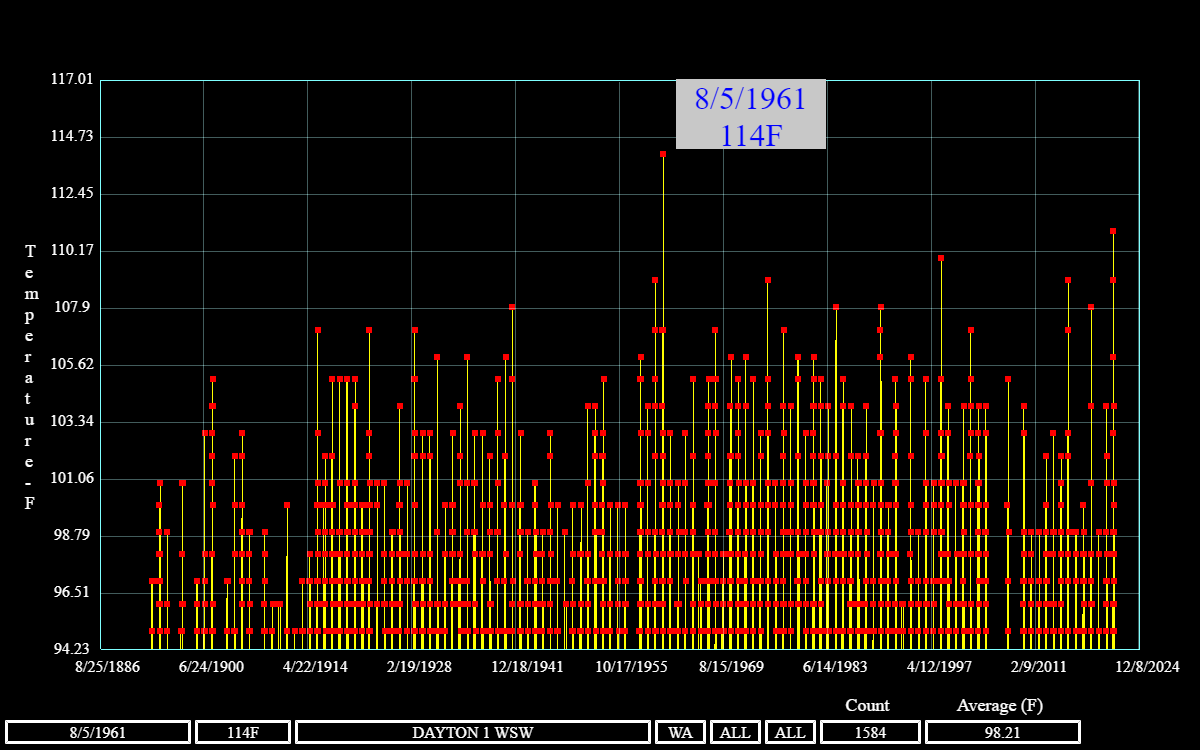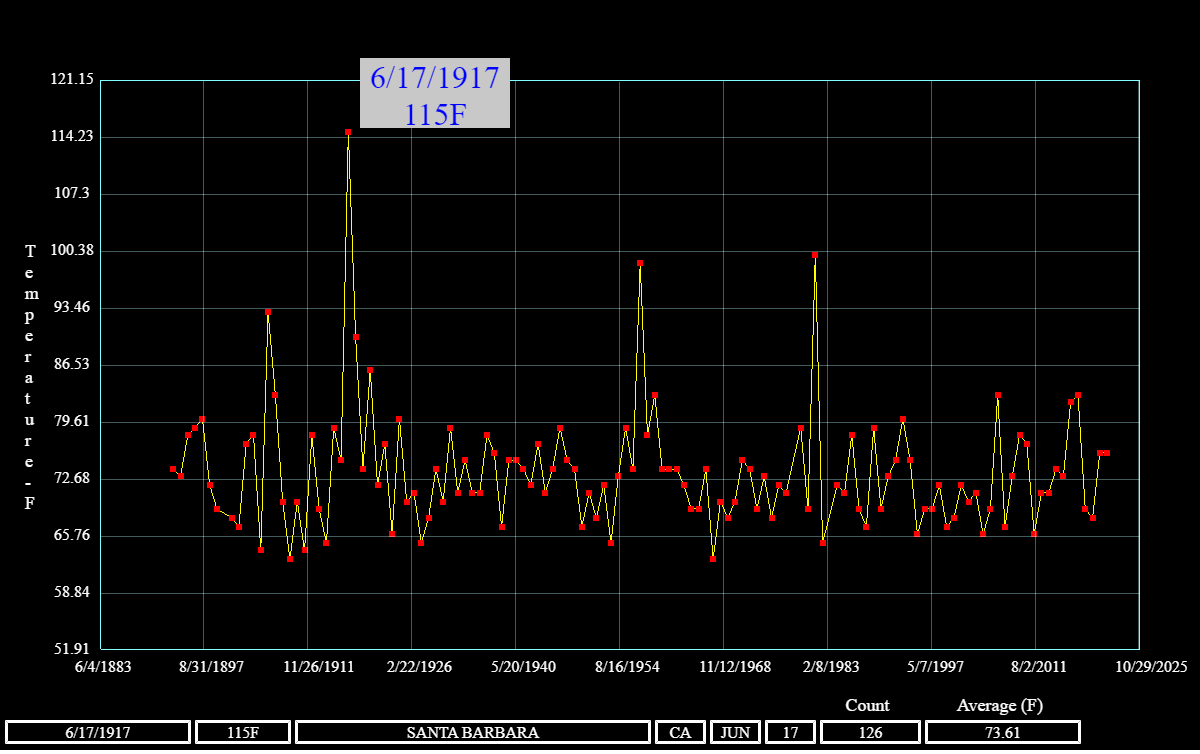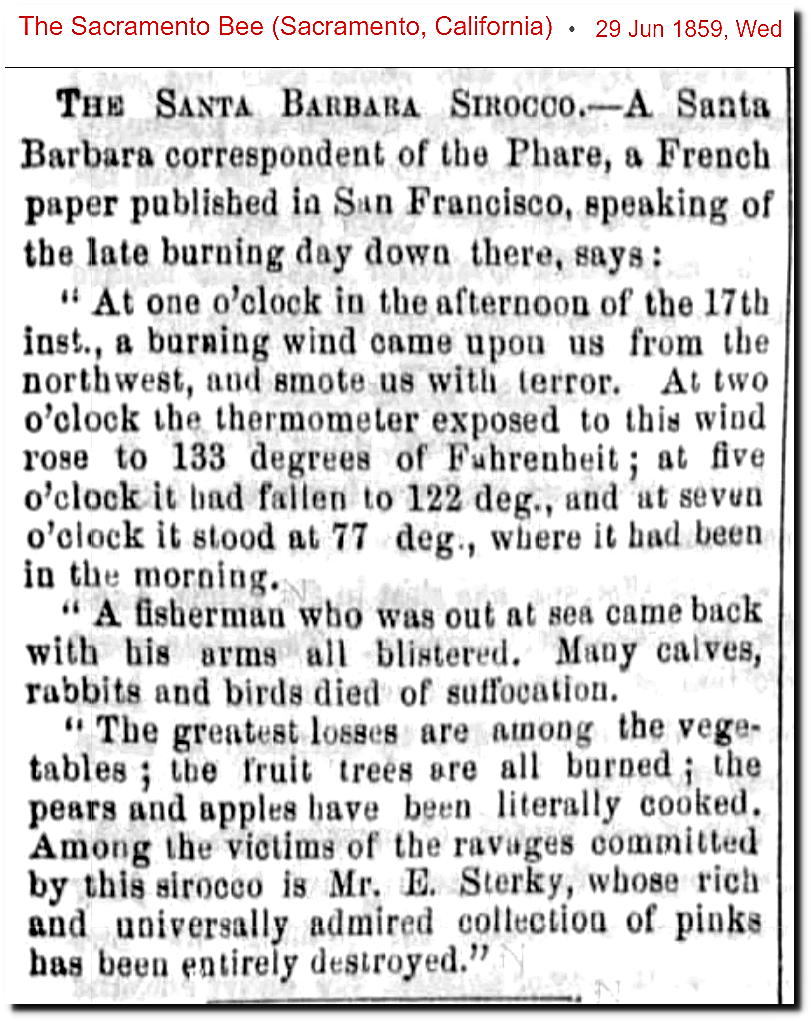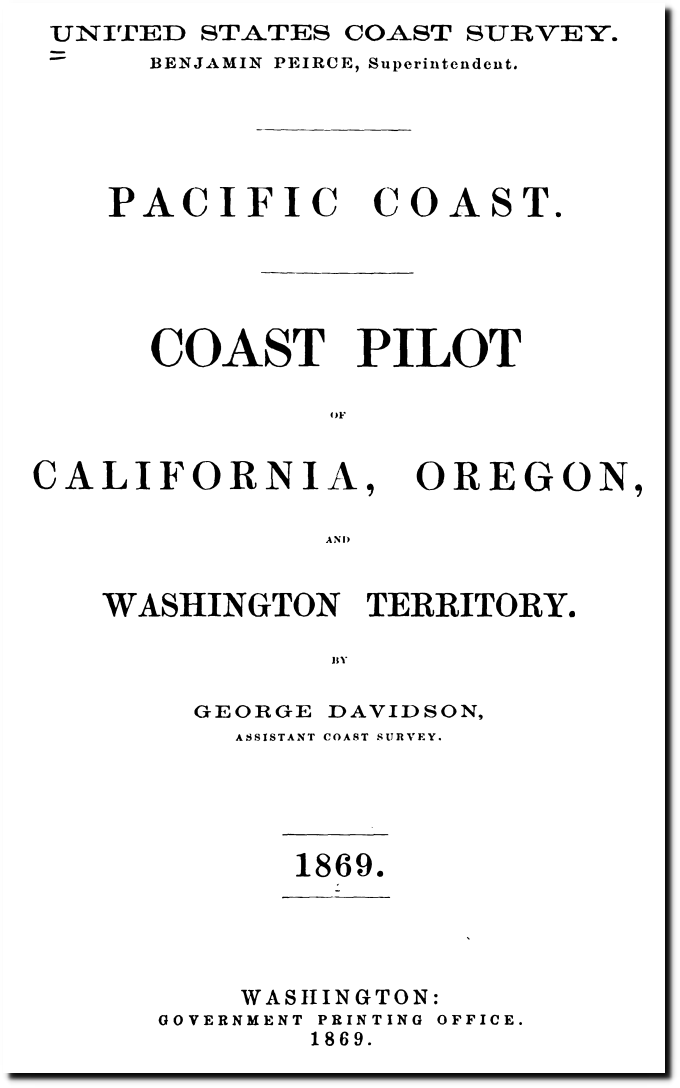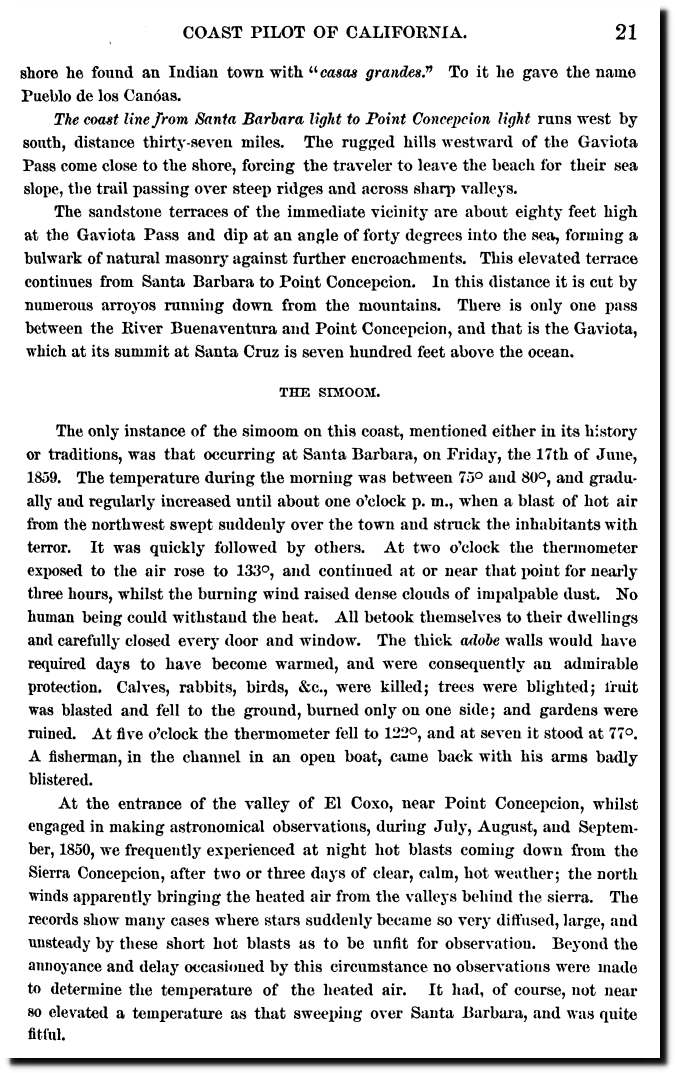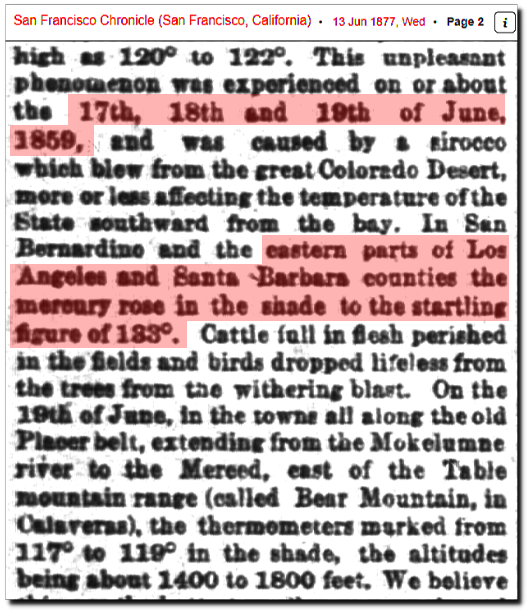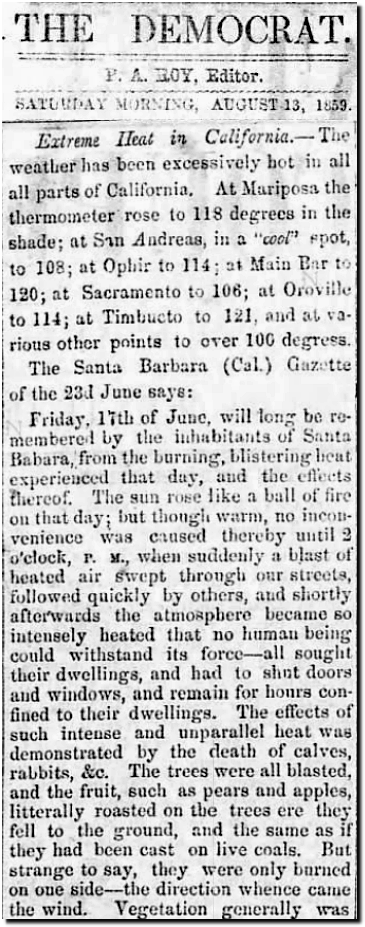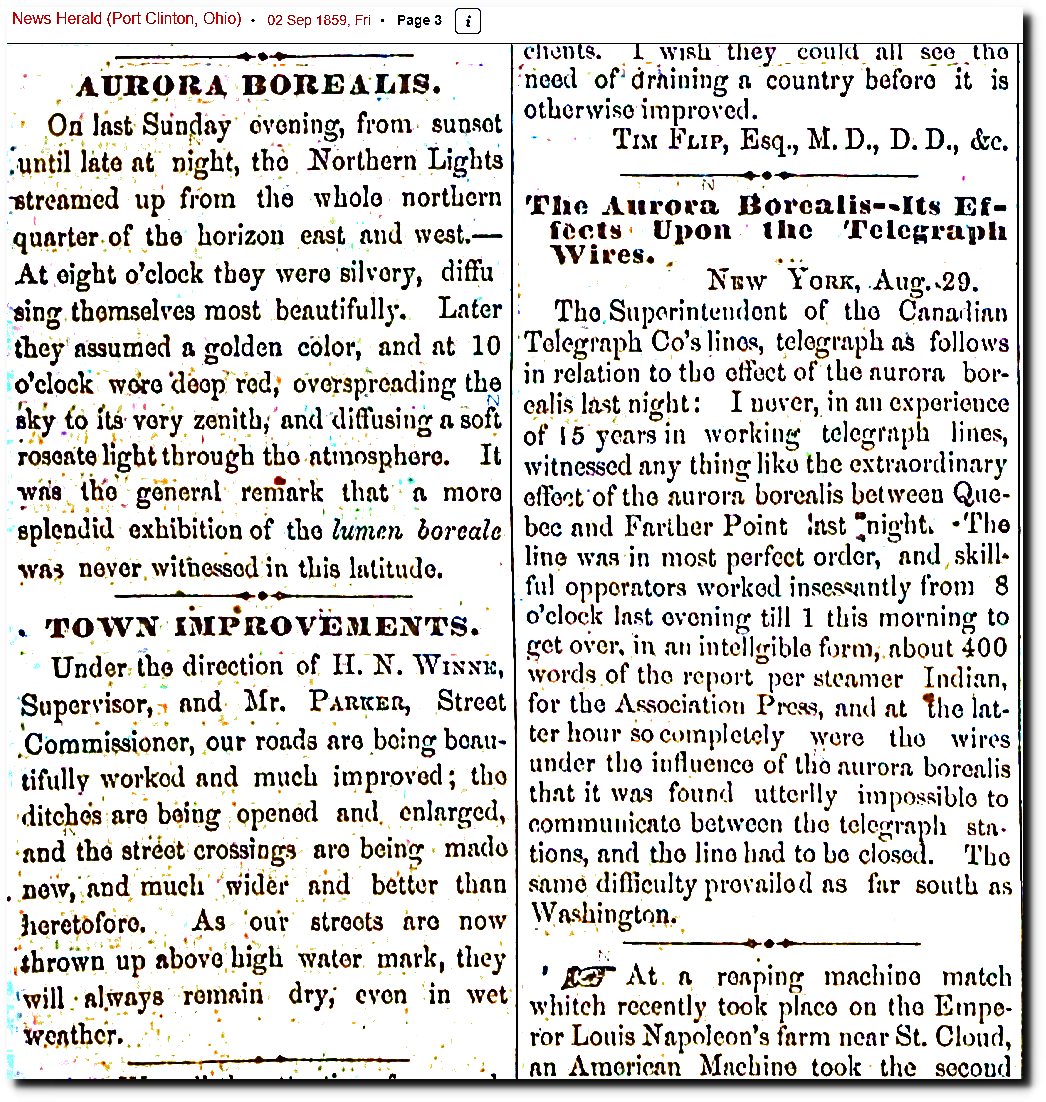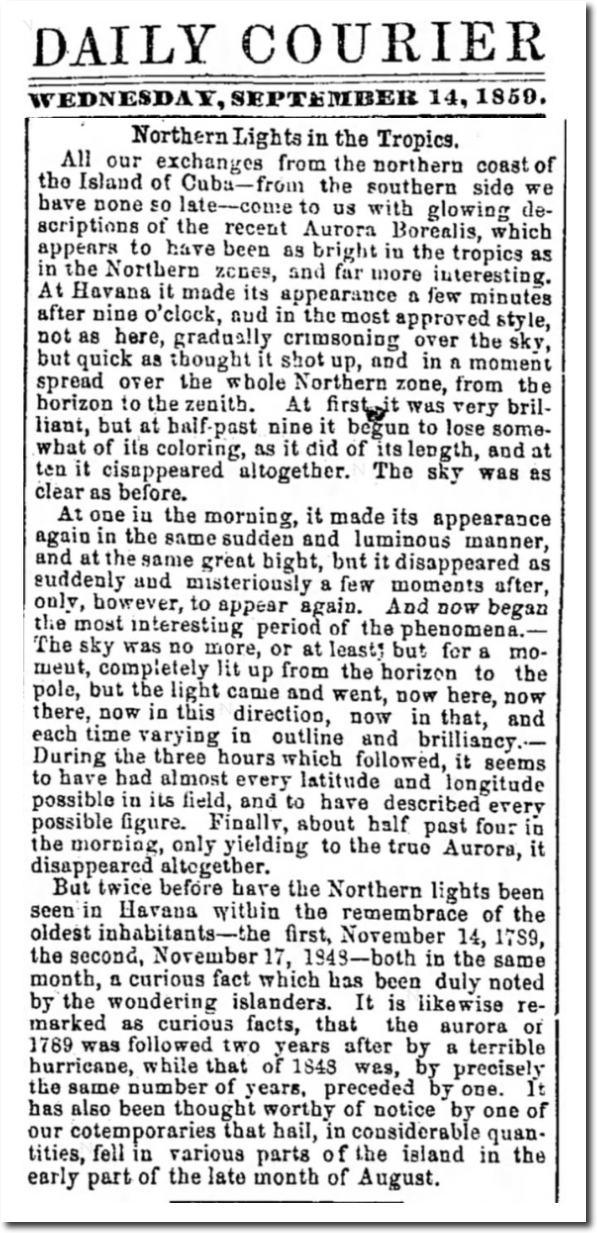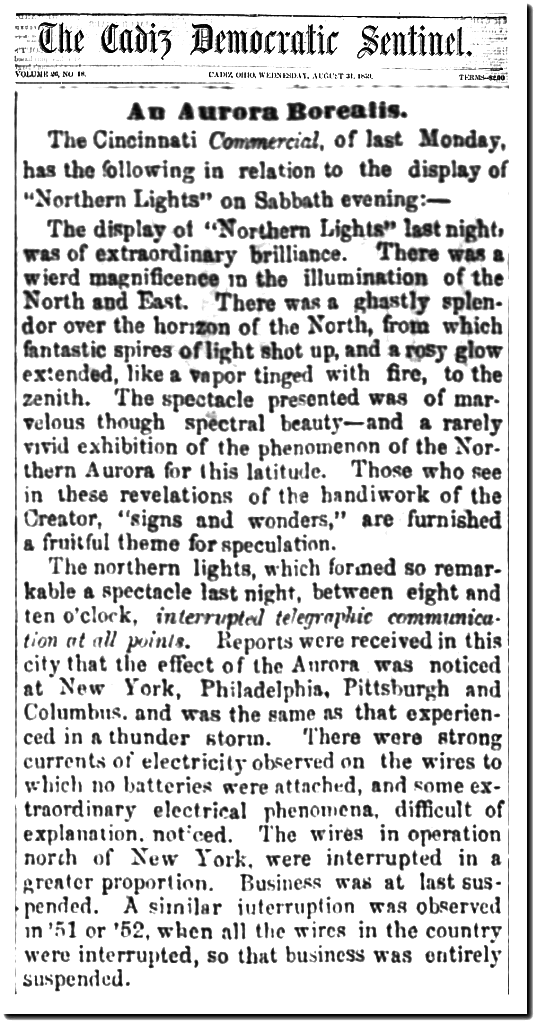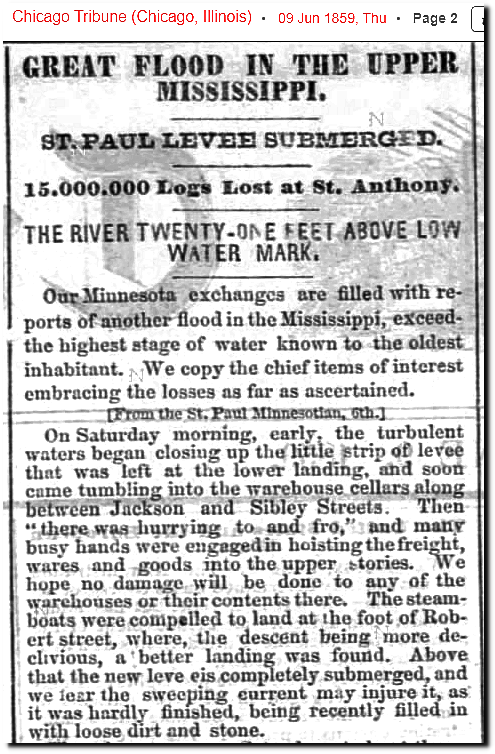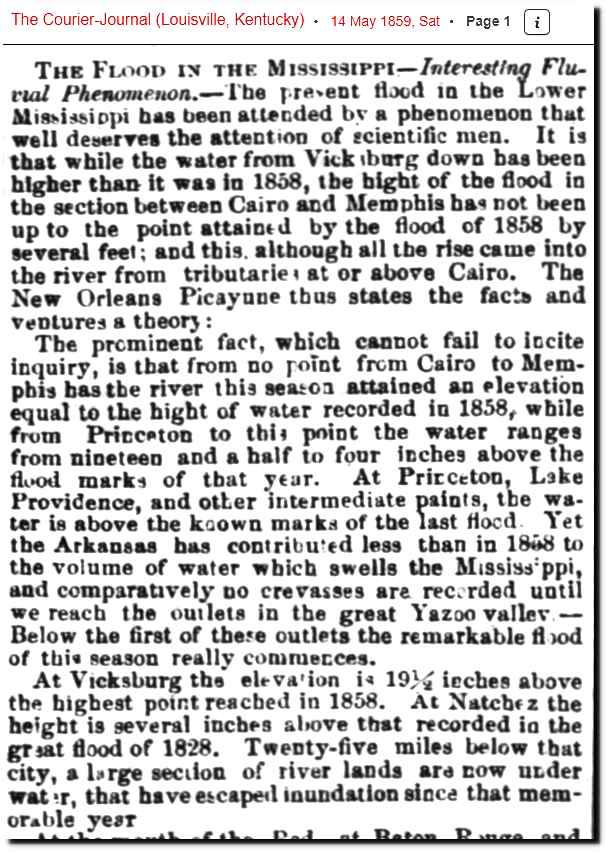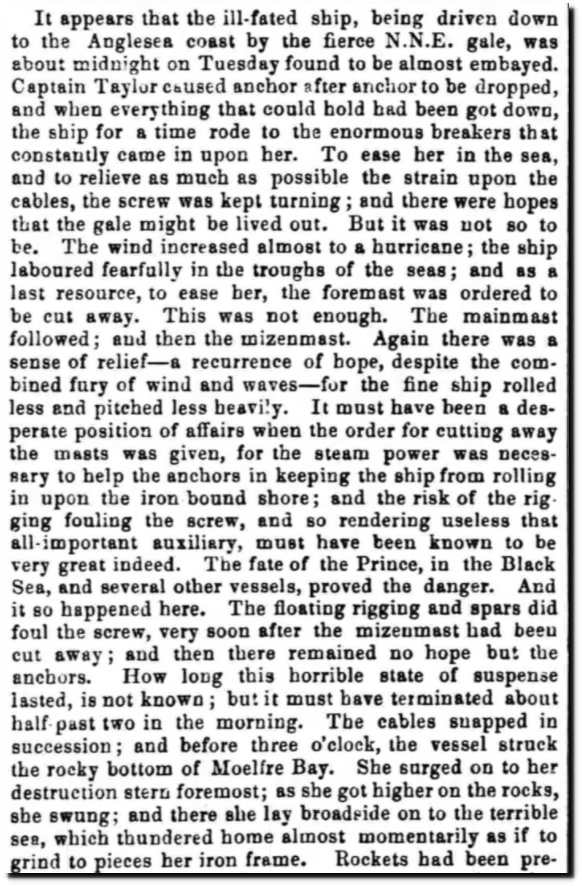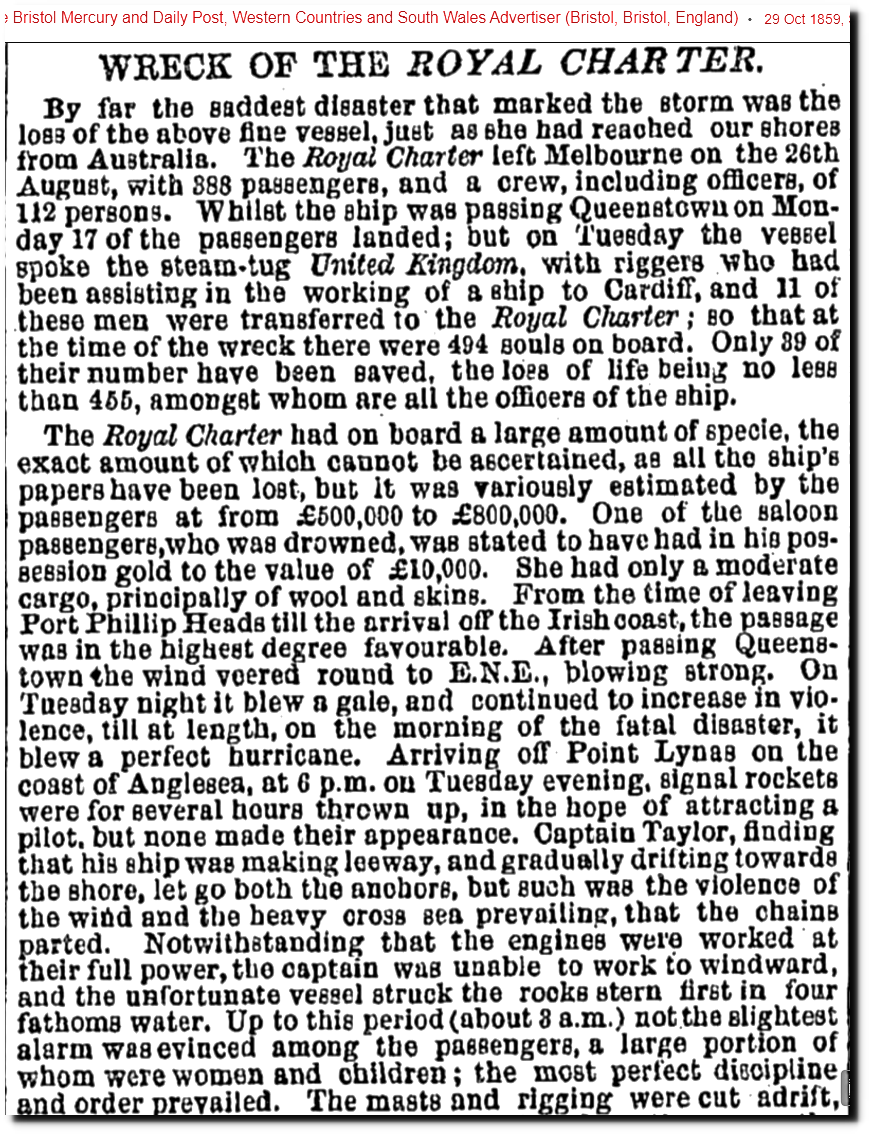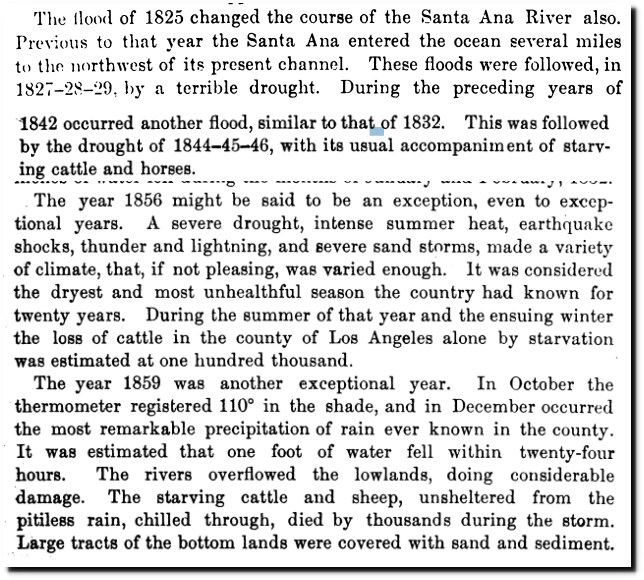National Geographic listed several weather events which occurred last year, and said they wouldn’t have been have been possible without the one part per ten thousand increase in CO2 over the past century. The most notable one being a heatwave in the Pacific Northwest where people died because they don’t have air conditioners.
National Geographic’s proposed solution is to shut down power plants which the air conditioners depend on.
2021’s weather disasters brought home the reality of climate change
NOAA’s state temperature record page shows three entries for 2021. Oregon tied their 1898 record of 119F and Washington beat their previous 1928 record by two degrees.
By contrast to the three entries from 2021, NOAA has twenty-three entries for 1936. Heatwaves were much worse in the US when CO2 was lower.
The National Climate Assessment shows this the same thing.
Temperature Changes in the United States – Climate Science Special Report
Some USHCN stations in Washington State did break their all-time temperature record in 2021, while others didn’t.
A much more impressive west coast heatwave occurred on June 17, 1859 in California.
The average June 17 daily maximum temperature at Santa Barbara, California is 74F (23C. Occasionally they get downslope winds off the mountains which cause temperatures to go much higher – like June 17, 1917 when temperatures rose to 115F.
But on June 17, 1859 the temperature rose to 133F for a few hours
“The Sacramento Bee (Sacramento, California) – 29 Jun 1859, Wed
The Santa Barbara SIRROCOO.—A Santa Barbara correspondent of the Phare, a French paper published in San Francisco, speaking of the late burning day down there, says:
“ At one o’clock in the afternoon of the 17th inst., a burning wind came upon us from the northwest, and smote us with (error, At two o’clock the thermometer exposed to this wind rose to 133 degrees of Fahrenheit; at five o’clock it bad fallen to 122 deg., and at seven o’clock it stood at 77 deg., where it had been in the morning.
‘A fisherman who was out at sea came back with his arms all blistered. Many calves, rabbits and birds died of suffocation.
” The greatest losses are among the vegetables ; the fruit trees ore all burned; the pears and apples have been literally cooked, Among the victims of the ravages committed by this sirocco is Mr. E. Sterky, whose rich and universally admired collection of pinks has been entirely destroyed.”
29 Jun 1859, 4 – The Sacramento Bee at Newspapers.com
“THE SIMOOM
‘The only instance of the simoom on this coast, mentioned either in its history or traditions, was that occurring at Santa Barbara, on Friday, the 17th of June, 1859. The temperature during the morning was between 75° and 80°, and gradually and regularly increased until about one o’clock p. m., when a blast of hot air from the northwest swept suddenly over the town and struck the inhabitants with terror. It was quickly followed by others, At two o’clock the thermometer exposed to the air rose to 133°, and continued at or near that point for nearly three hours, whilst the burning wind raised dense clouds of impalpable dust. No human being could withstand the heat. All betook themselves to their dwellings and carefully closed every door and window. The thick adobe walls would have required days to have become warmed, and were consequently an admirable protection, Calves, rabbits, birds, &c., were killed; trees were blighted; fruit was blasted and fell to the ground, burned only on one side; and gardens were Ruined. At five o’clock the thermometer fell to 122°, and at seven it stood at 77, A fisherman, in the channel in an open boat, came back with his arms badly blistered.
‘At the entrance of the valley of El Coxo, near Point Concepcion, whilst engaged in making astronomical observations, during July, August, and September, 1850, we frequently experienced at night hot blasts coming down from the Sierra Concepcion, after two or three days of clear, calm, hot weather; the north winds apparently bringing the heated air from the valleys behind the sierra. The records show many cases where stars suddenly became so very diffused, large, and ‘unsteady by these short hot blasts us to be unfit for observation. Beyond the annoyance and delay occasioned by this circumstance no observations were made to determine the temperature of the heated air, It had, of course, not near so elevated a temperature as that sweeping over Santa Barbara, and was quite fitful”
13 Jun 1877, Page 2 – San Francisco Chronicle at Newspapers.com
13 Aug 1859, 2 – Pointe Coupee Democrat at Newspapers.com
Unlike the baseless assertions about CO2 causing the 2021 heatwave, there is a very good explanation for the 1859 heatwave – the largest Mass Coronal Ejection ever recorded.
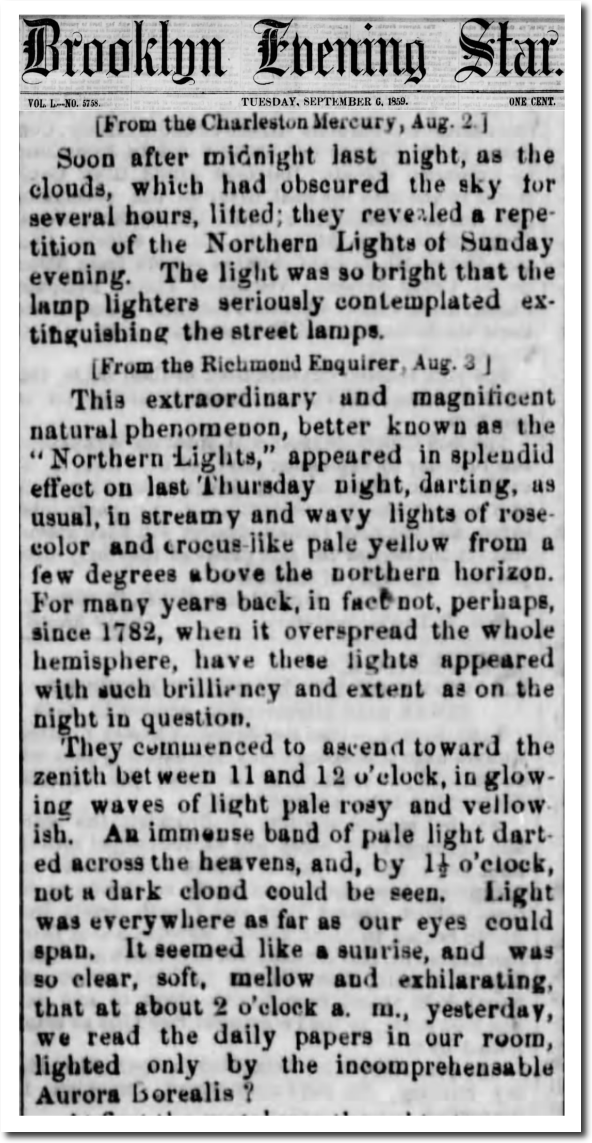
06 Sep 1859, Page 2 – Brooklyn Evening Star at Newspapers.com
02 Sep 1859, 3 – News Herald at Newspapers.com
14 Sep 1859, Page 1 – The Louisville Daily Courier at Newspapers.com
31 Aug 1859, 1 – The Cadiz Sentinel at Newspapers.com
There was a tremendous flood on the Mississippi the week before the record heat in Santa Barbara
09 Jun 1859, 2 – Chicago Tribune at Newspapers.com
14 May 1859, 1 – The Courier-Journal at Newspapers.com
30 Apr 1859, Page 1 – The Times-Picayune at Newspapers.com
29 Oct 1859, 3 – Sheffield and Rotherham Independent at Newspapers.com
01 Nov 1859, 4 – The Leeds Mercury at Newspapers.com
EXCEPTIONAL YEARS: A HISTORY OF CALIFORNIA FLOODS AND DROUGHT

